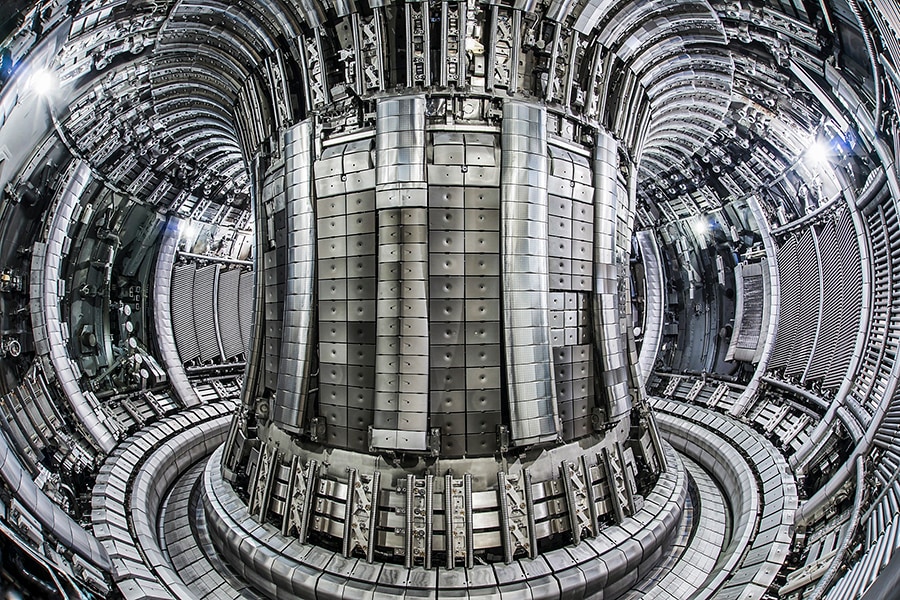
Startup seeks breakthrough in power from nuclear fusion
Fusion energy has long been held out as one of the most significant technologies needed to combat the effects of climate change because it could generate an abundance of inexpensive clean energy
 In an undated photo from EUROfusion, an internal view of the Joint European Torus vessel with a complete metallic wall of beryllium and tungsten at the Culham Centre for Fusion Energy in Abingdon, England. Image: EUROfusion via The New York Times
In an undated photo from EUROfusion, an internal view of the Joint European Torus vessel with a complete metallic wall of beryllium and tungsten at the Culham Centre for Fusion Energy in Abingdon, England. Image: EUROfusion via The New York Times
A startup founded by scientists at the Massachusetts Institute of Technology says it is nearing a technological milestone that could take the world a step closer to fusion energy, which has eluded scientists for decades.
Researchers at MIT's Plasma Science and Fusion Center and engineers at the company, Commonwealth Fusion Systems, have begun testing an extremely powerful magnet that is needed to generate immense heat that can then be converted to electricity. It would open the gates toward what they believe could eventually be a fusion reactor.
Fusion energy has long been held out as one of the most significant technologies needed to combat the effects of climate change because it could generate an abundance of inexpensive clean energy.
But there have been no commercial payoffs for fusion research, despite decades of investment and often overly aggressive promises. While there is a long history of international experimentation, scientists have not yet created fusion systems that generate more power than they consume.
Like traditional nuclear fission power, which splits atoms, fusion energy would not consume fossil fuel and would not produce greenhouse gases. It would be more desirable than nuclear fission because its fuel, usually hydrogen isotopes, is more plentiful than the uranium used by current nuclear plants, and because fusion plants would generate less-dangerous and fewer radioactive wastes.
©2019 New York Times News Service








